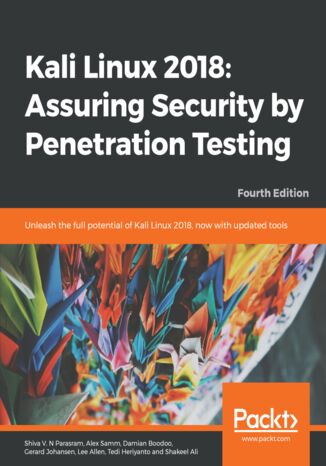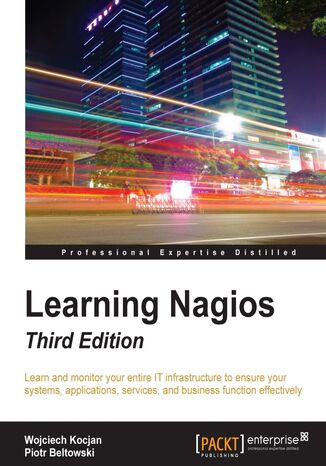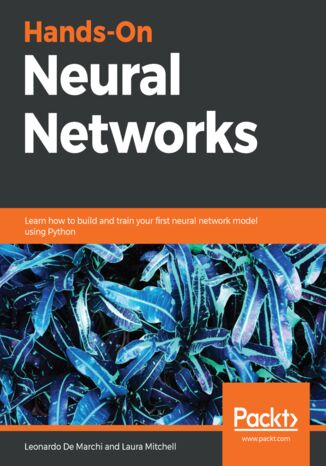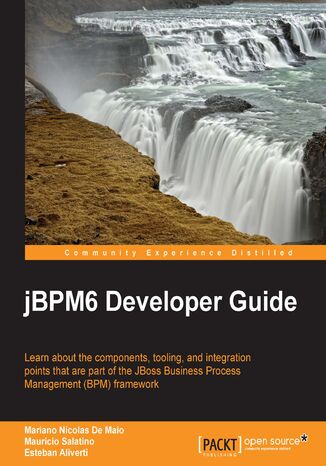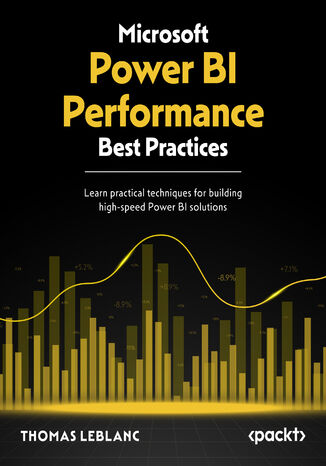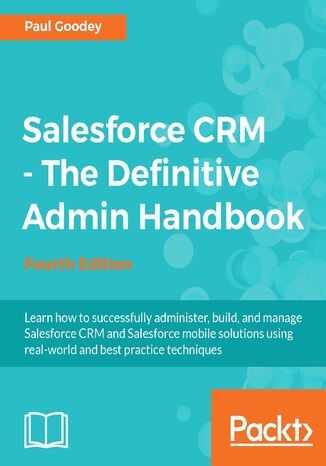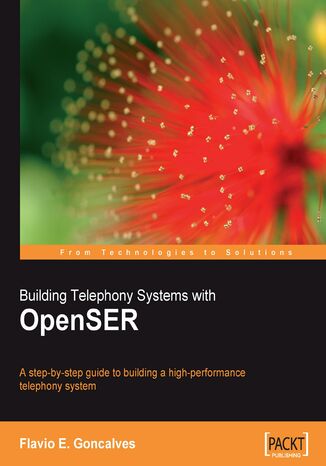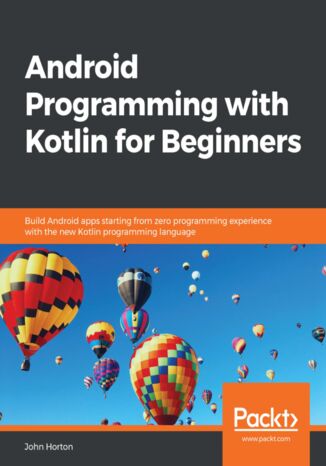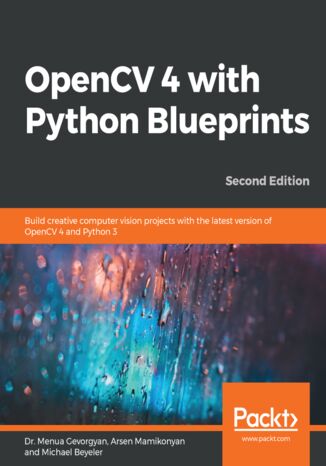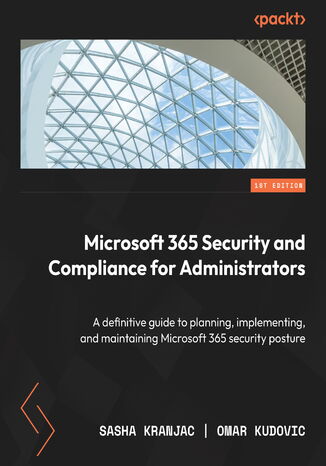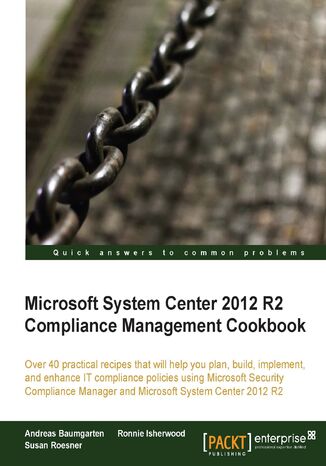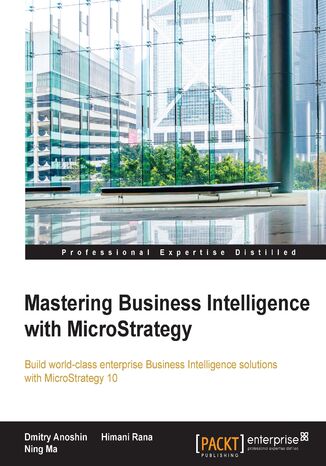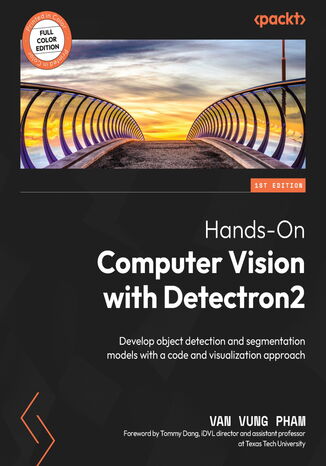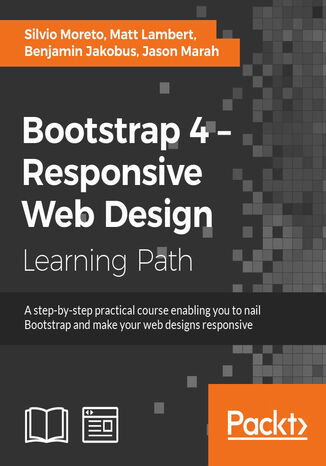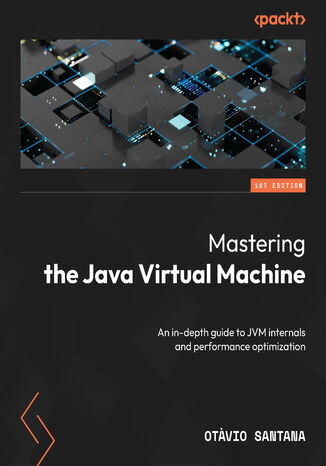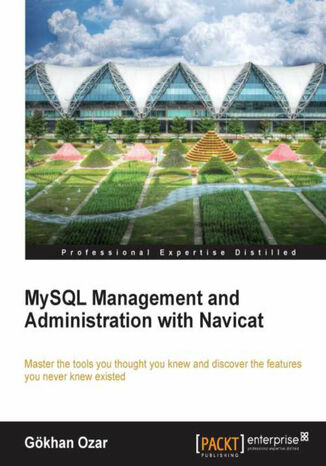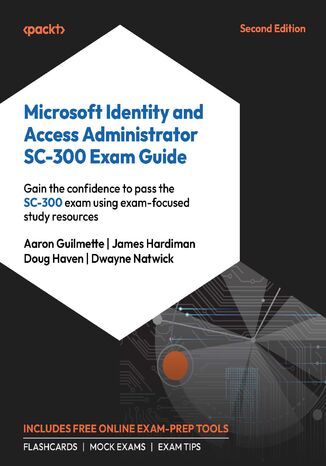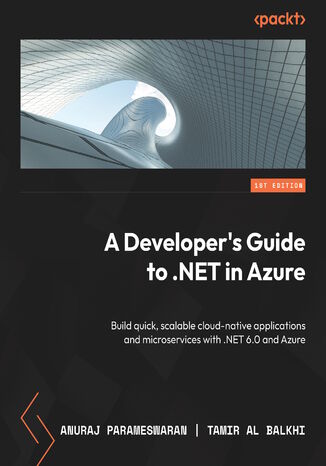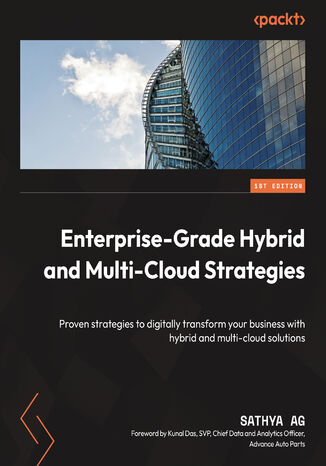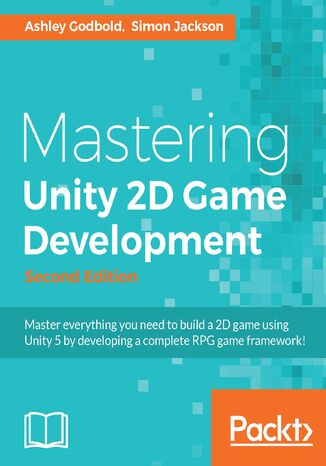Categories
Ebooks
-
Business and economy
- Bitcoin
- Businesswoman
- Coaching
- Controlling
- E-business
- Economy
- Finances
- Stocks and investments
- Personal competence
- Computer in the office
- Communication and negotiation
- Small company
- Marketing
- Motivation
- Multimedia trainings
- Real estate
- Persuasion and NLP
- Taxes
- Social policy
- Guides
- Presentations
- Leadership
- Public Relation
- Reports, analyses
- Secret
- Social Media
- Sales
- Start-up
- Your career
- Management
- Project management
- Human Resources
-
For children
-
For youth
-
Education
-
Encyclopedias, dictionaries
-
E-press
- Architektura i wnętrza
- Health and Safety
- Biznes i Ekonomia
- Home and garden
- E-business
- Ekonomia i finanse
- Esoterecism
- Finances
- Personal finance
- Business
- Photography
- Computer science
- HR & Payroll
- For women
- Computers, Excel
- Accounts
- Culture and literature
- Scientific and academic
- Environmental protection
- Opinion-forming
- Education
- Taxes
- Travelling
- Psychology
- Religion
- Agriculture
- Book and press market
- Transport and Spedition
- Healthand beauty
-
History
-
Computer science
- Office applications
- Data bases
- Bioinformatics
- IT business
- CAD/CAM
- Digital Lifestyle
- DTP
- Electronics
- Digital photography
- Computer graphics
- Games
- Hacking
- Hardware
- IT w ekonomii
- Scientific software package
- School textbooks
- Computer basics
- Programming
- Mobile programming
- Internet servers
- Computer networks
- Start-up
- Operational systems
- Artificial intelligence
- Technology for children
- Webmastering
-
Other
-
Foreign languages
-
Culture and art
-
School reading books
-
Literature
- Antology
- Ballade
- Biographies and autobiographies
- For adults
- Dramas
- Diaries, memoirs, letters
- Epic, epopee
- Essay
- Fantasy and science fiction
- Feuilletons
- Work of fiction
- Humour and satire
- Other
- Classical
- Crime fiction
- Non-fiction
- Fiction
- Mity i legendy
- Nobelists
- Novellas
- Moral
- Okultyzm i magia
- Short stories
- Memoirs
- Travelling
- Narrative poetry
- Poetry
- Politics
- Popular science
- Novel
- Historical novel
- Prose
- Adventure
- Journalism, publicism
- Reportage novels
- Romans i literatura obyczajowa
- Sensational
- Thriller, Horror
- Interviews and memoirs
-
Natural sciences
-
Social sciences
-
School textbooks
-
Popular science and academic
- Archeology
- Bibliotekoznawstwo
- Cinema studies
- Philology
- Polish philology
- Philosophy
- Finanse i bankowość
- Geography
- Economy
- Trade. World economy
- History and archeology
- History of art and architecture
- Cultural studies
- Linguistics
- Literary studies
- Logistics
- Maths
- Medicine
- Humanities
- Pedagogy
- Educational aids
- Popular science
- Other
- Psychology
- Sociology
- Theatre studies
- Theology
- Economic theories and teachings
- Transport i spedycja
- Physical education
- Zarządzanie i marketing
-
Guides
-
Game guides
-
Professional and specialist guides
-
Law
- Health and Safety
- History
- Road Code. Driving license
- Law studies
- Healthcare
- General. Compendium of knowledge
- Academic textbooks
- Other
- Construction and local law
- Civil law
- Financial law
- Economic law
- Economic and trade law
- Criminal law
- Criminal law. Criminal offenses. Criminology
- International law
- International law
- Health care law
- Educational law
- Tax law
- Labor and social security law
- Public, constitutional and administrative law
- Family and Guardianship Code
- agricultural law
- Social law, labour law
- European Union law
- Industry
- Agricultural and environmental
- Dictionaries and encyclopedia
- Public procurement
- Management
-
Tourist guides and travel
- Africa
- Albums
- Southern America
- North and Central America
- Australia, New Zealand, Oceania
- Austria
- Asia
- Balkans
- Middle East
- Bulgary
- China
- Croatia
- The Czech Republic
- Denmark
- Egipt
- Estonia
- Europe
- France
- Mountains
- Greece
- Spain
- Holand
- Iceland
- Lithuania
- Latvia
- Mapy, Plany miast, Atlasy
- Mini travel guides
- Germany
- Norway
- Active travelling
- Poland
- Portugal
- Other
- Przewodniki po hotelach i restauracjach
- Russia
- Romania
- Slovakia
- Slovenia
- Switzerland
- Sweden
- World
- Turkey
- Ukraine
- Hungary
- Great Britain
- Italy
-
Psychology
- Philosophy of life
- Kompetencje psychospołeczne
- Interpersonal communication
- Mindfulness
- General
- Persuasion and NLP
- Academic psychology
- Psychology of soul and mind
- Work psychology
- Relacje i związki
- Parenting and children psychology
- Problem solving
- Intellectual growth
- Secret
- Sexapeal
- Seduction
- Appearance and image
- Philosophy of life
-
Religion
-
Sport, fitness, diets
-
Technology and mechanics
Audiobooks
-
Business and economy
- Bitcoin
- Businesswoman
- Coaching
- Controlling
- E-business
- Economy
- Finances
- Stocks and investments
- Personal competence
- Communication and negotiation
- Small company
- Marketing
- Motivation
- Real estate
- Persuasion and NLP
- Taxes
- Social policy
- Guides
- Presentations
- Leadership
- Public Relation
- Secret
- Social Media
- Sales
- Start-up
- Your career
- Management
- Project management
- Human Resources
-
For children
-
For youth
-
Education
-
Encyclopedias, dictionaries
-
E-press
-
History
-
Computer science
-
Other
-
Foreign languages
-
Culture and art
-
School reading books
-
Literature
- Antology
- Ballade
- Biographies and autobiographies
- For adults
- Dramas
- Diaries, memoirs, letters
- Epic, epopee
- Essay
- Fantasy and science fiction
- Feuilletons
- Work of fiction
- Humour and satire
- Other
- Classical
- Crime fiction
- Non-fiction
- Fiction
- Mity i legendy
- Nobelists
- Novellas
- Moral
- Okultyzm i magia
- Short stories
- Memoirs
- Travelling
- Poetry
- Politics
- Popular science
- Novel
- Historical novel
- Prose
- Adventure
- Journalism, publicism
- Reportage novels
- Romans i literatura obyczajowa
- Sensational
- Thriller, Horror
- Interviews and memoirs
-
Natural sciences
-
Social sciences
-
Popular science and academic
-
Guides
-
Professional and specialist guides
-
Law
-
Tourist guides and travel
-
Psychology
- Philosophy of life
- Interpersonal communication
- Mindfulness
- General
- Persuasion and NLP
- Academic psychology
- Psychology of soul and mind
- Work psychology
- Relacje i związki
- Parenting and children psychology
- Problem solving
- Intellectual growth
- Secret
- Sexapeal
- Seduction
- Appearance and image
- Philosophy of life
-
Religion
-
Sport, fitness, diets
-
Technology and mechanics
Videocourses
-
Data bases
-
Big Data
-
Biznes, ekonomia i marketing
-
Cybersecurity
-
Data Science
-
DevOps
-
For children
-
Electronics
-
Graphics/Video/CAX
-
Games
-
Microsoft Office
-
Development tools
-
Programming
-
Personal growth
-
Computer networks
-
Operational systems
-
Software testing
-
Mobile devices
-
UX/UI
-
Web development
-
Management
Podcasts
Shiva V. N. Parasram, Alex Samm, Damian Boodoo, Gerard Johansen, ...
Kali Linux is a comprehensive penetration testing platform with advanced tools to identify, detect, and exploit the vulnerabilities uncovered in the target network environment. With Kali Linux, you can apply the appropriate testing methodology with defined business objectives and a scheduled test plan, resulting in successful penetration testing project engagement.This fourth edition of Kali Linux 2018: Assuring Security by Penetration Testing starts with the installation of Kali Linux. You will be able to create a full test environment to safely practice scanning, vulnerability assessment, and exploitation. You’ll explore the essentials of penetration testing by collecting relevant data on the target network with the use of several footprinting and discovery tools. As you make your way through the chapters, you’ll focus on specific hosts and services via scanning and run vulnerability scans to discover various risks and threats within the target, which can then be exploited. In the concluding chapters, you’ll apply techniques to exploit target systems in order to gain access and find a way to maintain that access. You’ll also discover techniques and tools for assessing and attacking devices that are not physically connected to the network, including wireless networks.By the end of this book, you will be able to use NetHunter, the mobile version of Kali Linux, and write a detailed report based on your findings.
Learning Nagios. A beginners guide on Nagios - Third Edition
Wojciech Kocjan, Piotr Beltowski
Nagios, a powerful and widely used IT monitoring and management software for problem -solving. It detects problems related to your organizations infrastructure and helps in resolving the issue before it impacts the business. Following the success of the previous edition, this book will continue to help you monitor the status of network devices and also notify the system administrators of network problems. Starting with the fundamentals, the book will teach you how to install and configure Nagios for your environment. The book helps you learn how to end downtimes, adding comments and generating reports using the built-in Web interface of Nagios. Moving on, you will be introduced to the third-party web interfaces and applications for checking the status and report specific information. As you progress further in Learning Nagios, you will focus on the standard set of Nagios plugins and also focus on teach you how to efficiently manage large configurations and using templates. Once you are up to speed with this, you will get to know the concept and working of notifications and events in Nagios. The book will then uncover the concept of passive check and shows how to use NRDP (Nagios Remote Data Processor). The focus then shifts to how Nagios checks can be run on remote machines and SNMP (Simple Network Management Protocol) can be used from Nagios. Lastly, the book will demonstrate how to extend Nagios by creating custom check commands, custom ways of notifying users and showing how passive checks and NRDP can be used to integrate your solutions with Nagios. By the end of the book, you will be a competent system administrator who could monitor mid-size businesses or even large scale enterprises.
Hands-On Neural Networks. Learn how to build and train your first neural network model using Python
Leonardo De Marchi, Laura Mitchell
Neural networks play a very important role in deep learning and artificial intelligence (AI), with applications in a wide variety of domains, right from medical diagnosis, to financial forecasting, and even machine diagnostics.Hands-On Neural Networks is designed to guide you through learning about neural networks in a practical way. The book will get you started by giving you a brief introduction to perceptron networks. You will then gain insights into machine learning and also understand what the future of AI could look like. Next, you will study how embeddings can be used to process textual data and the role of long short-term memory networks (LSTMs) in helping you solve common natural language processing (NLP) problems. The later chapters will demonstrate how you can implement advanced concepts including transfer learning, generative adversarial networks (GANs), autoencoders, and reinforcement learning. Finally, you can look forward to further content on the latest advancements in the field of neural networks.By the end of this book, you will have the skills you need to build, train, and optimize your own neural network model that can be used to provide predictable solutions.
Bojan Kolosnjaji, Huang Xiao, Peng Xu, Apostolis Zarras
Artificial intelligence offers data analytics methods that enable us to efficiently recognize patterns in large-scale data. These methods can be applied to various cybersecurity problems, from authentication and the detection of various types of cyberattacks in computer networks to the analysis of malicious executables.Written by a machine learning expert, this book introduces you to the data analytics environment in cybersecurity and shows you where AI methods will fit in your cybersecurity projects. The chapters share an in-depth explanation of the AI methods along with tools that can be used to apply these methods, as well as design and implement AI solutions. You’ll also examine various cybersecurity scenarios where AI methods are applicable, including exercises and code examples that’ll help you effectively apply AI to work on cybersecurity challenges. The book also discusses common pitfalls from real-world applications of AI in cybersecurity issues and teaches you how to tackle them.By the end of this book, you’ll be able to not only recognize where AI methods can be applied, but also design and execute efficient solutions using AI methods.
Thomas LeBlanc, Bhavik Merchant, Kenneth Neal
In a world dominated by data, organizations heavily rely on business intelligence tools like Power BI for deriving insights and informed decision-making. Yet, as data volumes grow and user demands increase, achieving optimal performance becomes challenging. Author Thomas LeBlanc, a seasoned Business Intelligence Architect with over 30 years of IT experience, draws on his extensive expertise to guide you in overcoming challenges related to slow performance, data modeling, query optimization, visualization design, deployment, administration, integration, compliance, and security.This book covers topics ranging from architecture and data modeling to Power BI premium features, DAX formulas, and collaboration, helping you to gain a deep understanding of the Power BI architecture, design efficient data models, create efficient queries, and improve visualization performance. You’ll also learn best practices to deploy and manage Power BI solutions, integrate with other tools and systems, ensure compliance and security, and collaborate with team members.By the end of the book, you’ll have developed your knowledge and skills to design, build, and maintain high-performing, scalable, and efficient Power BI solutions to drive unparalleled business success.
Salesforce CRM’s Winter ’17 release offers a host of new features for CRM designed to transform your sales and marketing requirements. With this comprehensive guide to implementing Salesforce CRM, administrators of all levels can easily acquire deep knowledge of the platform. The book begins by guiding you through setting up users and the security settings and then progresses to configuration, data management, and data analytics. We swiftly move on to the setting up of organization wide features that affect the look and feel of the application. Process automation and approval mechanisms are covered next, along with the functional areas of Sales Cloud, Service Cloud, Marketing Cloud, and Salesforce Chatter. This book details Salesforce CRM system administration in a practical way and is an invaluable reference for both new administrators and experienced professionals. At the end of the book, techniques to further enhance the system and improve the return on investment Salesforce mobile apps and mobile administration are covered, along with Salesforce Adoption Manager. Every chapter is complete with a section containing example questions of the type that you might encounter in the certification examination.
Android is the most popular mobile operating system in the world and Kotlin has been declared by Google as a first-class programming language to build Android apps. With the imminent arrival of the most anticipated Android update, Android 10 (Q), this book gets you started building apps compatible with the latest version of Android.It adopts a project-style approach, where we focus on teaching the fundamentals of Android app development and the essentials of Kotlin by building three real-world apps and more than a dozen mini-apps. The book begins by giving you a strong grasp of how Kotlin and Android work together before gradually moving onto exploring the various Android APIs for building stunning apps for Android with ease. You will learn to make your apps more presentable using different layouts. You will dive deep into Kotlin programming concepts such as variables, functions, data structures, Object-Oriented code, and how to connect your Kotlin code to the UI. You will learn to add multilingual text so that your app is accessible to millions of more potential users. You will learn how animation, graphics, and sound effects work and are implemented in your Android app.By the end of the book, you will have sound knowledge about significant Kotlin programming concepts and start building your own fully featured Android apps.
Dr. Menua Gevorgyan, Arsen Mamikonyan, Michael Beyeler
OpenCV is a native cross-platform C++ library for computer vision, machine learning, and image processing. It is increasingly being adopted in Python for development. This book will get you hands-on with a wide range of intermediate to advanced projects using the latest version of the framework and language, OpenCV 4 and Python 3.8, instead of only covering the core concepts of OpenCV in theoretical lessons. This updated second edition will guide you through working on independent hands-on projects that focus on essential OpenCV concepts such as image processing, object detection, image manipulation, object tracking, and 3D scene reconstruction, in addition to statistical learning and neural networks.You’ll begin with concepts such as image filters, Kinect depth sensor, and feature matching. As you advance, you’ll not only get hands-on with reconstructing and visualizing a scene in 3D but also learn to track visually salient objects. The book will help you further build on your skills by demonstrating how to recognize traffic signs and emotions on faces. Later, you’ll understand how to align images, and detect and track objects using neural networks.By the end of this OpenCV Python book, you’ll have gained hands-on experience and become proficient at developing advanced computer vision apps according to specific business needs.
In today's hostile cyber landscape, securing data and complying with regulations is paramount for individuals, businesses, and organizations alike. Learn how Microsoft 365 Security and Compliance offers powerful tools to protect sensitive data and defend against evolving cyber threats with this comprehensive guide for administrators.Starting with an introduction to Microsoft 365 plans and essential compliance and security features, this book delves into the role of Azure Active Directory in Microsoft 365, laying the groundwork for a robust security framework. You’ll then advance to exploring the complete range of Microsoft 365 Defender security products, their coverage, and unique protection services to combat evolving threats.From threat mitigation strategies to governance and compliance best practices, you’ll gain invaluable insights into classifying and protecting data while mastering crucial data lifecycle capabilities in Microsoft 365.By the end of this book, you’ll be able to elevate the security and compliance posture of your organization significantly.
Dmitry Anoshin, Himani Rana, Ning Ma, Neil Mehta
Business intelligence is becoming more important by the day, with cloud offerings and mobile devices gaining wider acceptance and achieving better market penetration. MicroStrategy Reporting Suite is an absolute leader in the BI market and offers rich capabilities from basic data visualizations to predictive analytics. It lets you various delivery methods such as the Web, desktops, and mobiles.Using real-world BI scenarios, this book helps you to implement Business Analytics solutions in big e-commerce companies. It kicks off with MicroStrategy 10 features and then covers schema design models and techniques. Building upon your existing knowledge, the book will teach you advanced techniques for building documents and dashboards. It further teaches various graphical techniques for presenting data for analysis using maps, graphs, and advanced charts. Although MicroStrategy has rich functionality, the book will show how to customize it in order to meet your business requirements. You will also become familiar with the native analytical functions that will help you to maximize the impact of BI solutions with powerful predictive analytics. Furthermore, the book will focus on MicroStrategy Mobile Analytics along with data discovery and desktop capabilities such as connecting various data sources and building interactive dashboards. The book will also uncover best practices, troubleshooting techniques for MicroStrategy system administration, and also security and authentication techniques. Lastly, you will learn to use Hadoop for MicroStrategy reporting.By the end of the book, you will become proficient in evaluating any BI software in order to choose the best one that meets all business requirements.
Computer vision is a crucial component of many modern businesses, including automobiles, robotics, and manufacturing, and its market is growing rapidly. This book helps you explore Detectron2, Facebook's next-gen library providing cutting-edge detection and segmentation algorithms. It’s used in research and practical projects at Facebook to support computer vision tasks, and its models can be exported to TorchScript or ONNX for deployment.The book provides you with step-by-step guidance on using existing models in Detectron2 for computer vision tasks (object detection, instance segmentation, key-point detection, semantic detection, and panoptic segmentation). You’ll get to grips with the theories and visualizations of Detectron2’s architecture and learn how each module in Detectron2 works. As you advance, you’ll build your practical skills by working on two real-life projects (preparing data, training models, fine-tuning models, and deployments) for object detection and instance segmentation tasks using Detectron2. Finally, you’ll deploy Detectron2 models into production and develop Detectron2 applications for mobile devices.By the end of this deep learning book, you’ll have gained sound theoretical knowledge and useful hands-on skills to help you solve advanced computer vision tasks using Detectron2.
Firewalls are used to protect your network from the outside world. Using a Linux firewall, you can do a lot more than just filtering packets. This book shows you how to implement Linux firewalls and Quality of Service using practical examples from very small to very large networks.After giving us a background of network security, the book moves on to explain the basic technologies we will work with, namely netfilter, iproute2, NAT and l7-filter. These form the crux of building Linux firewalls and QOS. The later part of the book covers 5 real-world networks for which we design the security policies, build the firewall, setup the script, and verify our installation.Providing only necessary theoretical background, the book takes a practical approach, presenting case studies and plenty of illustrative examples.
Silvio Moreto, Matt Lambert, Benjamin Jakobus, Jason Marah
Bootstrap framework's ease-of-use (along with its cross-browser compatibility, support for mobile user interfaces, and responsive web design capabilities) makes it an essential building block for any modern web application. With the first module, plunge into the Bootstrap frontend framework with the help of examples that will illustrate the use of each element and component in a proper way. You will get a better understanding of what is happening and where you want to reach. Also, you will gain confidence with the framework and develop some very common examples using Bootstrap. All these examples are explained step by step and in depth. The second module is a comprehensive tutorial; we'll teach you everything that you need to know to start building websites with Bootstrap 4 in a practical way. You'll learn about build tools such as Node, Grunt, and many others. You'll also discover the principles of mobile-first design in order to ensure that your pages can fit any screen size and meet responsive requirements. Learn Bootstrap's grid system and base CSS to ensure that your designs are robust and that your development process is speedy and efficient. Right from the first chapter of the third module, you'll delve into building a customized Bootstrap website from scratch. Get to grips with Bootstrap's key features and quickly discover the various ways in which Bootstrap can help you develop web interfaces. Once you reach the final pages of this book, you should have mastered the framework's ins and outs, and should be building highly customizable and optimized web interfaces. The course will enable you to rapidly build elegant, powerful, and responsive interfaces for professional-level web pages using Bootstrap 4.This Learning Path combines some of the best that Packt has to offer in one complete, curated package. It includes content from the following Packt products:? Bootstrap by Example – by Silvio Moreto? Learning Bootstrap 4, Second Edition – by Matt Lambert ? Mastering Bootstrap 4 – by Benjamin Jakobus and Jason Marah
Mastering the Java Virtual Machine. An in-depth guide to JVM internals and performance optimization
Mastering the Java Virtual Machine is a comprehensive guide that will take you into the heart of the Java programming language, guiding you through the intricate workings of the Java Virtual Machine (JVM) and equipping you with essential skills to become a proficient Java developer.You’ll start by understanding the JVM, exploring its architecture and how it executes Java code. Through detailed explanations and real-world examples, you’ll gain a deep understanding of JVM internals, enabling you to write efficient and optimized Java applications. As you progress, you’ll delve into memory management and execution, unraveling the complexities of heap and stack management, garbage collection, and memory profiling. You'll learn how memory is allocated and reclaimed in the JVM, as well as how to optimize memory usage and identify performance bottlenecks in your applications. With this knowledge, you’ll be able to create Java programs that are not only robust but also highly performant.By the end of this Java book, you’ll have the skills needed to excel in Java programming, writing efficient and maintainable code.
Any database designer who wants to accomplish both everyday tasks and more advanced actions with a few clicks or drag-and-drops can now do so using Navicat's advanced tools and this book.Starting with the basics before progressing with advanced features, this book can be read from cover to cover, or simply used as a reference guide for any problems you encounter.The book features 'work along' tutorials, some of which will surprise you by revealing features of Navicat which you may never have known existed ñ features such as designing functions and stored procedures, event triggers, creating batch jobs and scheduling.MySQL Management and Administration with Navicat is an ideal resource to master Navicat and unlock its true potential.
Aaron Guilmette, James Hardiman, Doug Haven, Dwayne Natwick
SC-300 exam content has undergone significant changes, and this second edition aligns with the revised exam objectives. This updated edition gives you access to online exam prep resources such as chapter-wise practice questions, mock exams, interactive flashcards, and expert exam tips, providing you with all the tools you need for thorough exam preparation.You’ll get to grips with the creation, configuration, and management of Microsoft Entra identities, as well as understand the planning, implementation, and management of Microsoft Entra user authentication processes. You’ll learn to deploy and use new Global Secure Access features, design cloud application strategies, and manage application access and policies by using Microsoft Cloud App Security. You’ll also gain experience in configuring Privileged Identity Management for users and guests, working with the Permissions Creep Index, and mitigating associated risks.By the end of this book, you’ll have mastered the skills essential for securing Microsoft environments and be able to pass the SC-300 exam on your first attempt.
C2B2 Consulting Ltd, Nicholas Wright, Matt Brasier
Oracle SOA Suite 11g forms the heart of many organisations' Service Oriented Architecture. Yet for such a core component, simple information on how to tune and configure SOA Suite and its infrastructure is hard to find. Because Oracle SOA Suite 11g builds on top of a variety of infrastructure components, up until now there has been no one single complete reference that brings together all the best practices for tuning the whole SOA stack.Oracle SOA Suite 11g Performance Tuning Cookbook contains plenty of tips and tricks to help you get the best performance from your SOA Suite infrastructure. From monitoring your environment so you know where bottlenecks are, to tuning the Java Virtual Machine, WebLogic Application Server, and BPEL and BPMN mediator engines, this book will give you the techniques you need in a easy to follow step-by-step guide.Starting with how to identify problems, and building on that with sections on monitoring, testing, and tuning, the recipes in this book will take you through many of the options available for performance tuning your application.There are many considerations to make when trying to get the best performance out of the Oracle SOA Suite platform. This performance Cookbook will teach you the whole process of tuning JVM garbage collection and memory, tuning BPEL and BPMN persistence settings, and tuning the application server. This book focuses on bringing together tips on how to identify the key bottlenecks in the whole SOA Suite infrastructure, and how to alleviate them.The Oracle SOA Suite 11g Performance Tuning Cookbook will ensure that you have the tools and techniques to get the most out of your infrastructure, delivering reliable, fast, and scalable services to your enterprise.
Anuraj Parameswaran, Tamir Al Balkhi
A Developer’s Guide to .NET in Azure helps you embark on a transformative journey through Microsoft Azure that is tailored to .NET developers. This book is a curated compendium that’ll enable you to master the creation of resilient, scalable, and highly available applications.The book is divided into four parts, with Part 1 demystifying Azure for you and emphasizing the portal's utility and seamless integration. The chapters in this section help you configure your workspace for optimal Azure synergy. You’ll then move on to Part 2, where you’ll explore serverless computing, microservices, containerization, Dapr, and Azure Kubernetes Service for scalability, and build pragmatic, cost-effective applications using Azure Functions and Container apps. Part 3 delves into data and storage, showing you how to utilize Azure Blob Storage for unstructured data, Azure SQL Database for structured data, and Azure Cosmos DB for document-oriented data. The final part teaches you about messaging and security, utilizing Azure App Configuration, Event Hubs, Service Bus, Key Vault, and Azure AD B2C for robust, secure applications.By the end of this book, you’ll have mastered Azure's responsive infrastructure for exceptional applications.
Picture a home where you can adjust the lighting based on the time of day or when movement is detected. In this same home, you can also detect when a door is unexpectedly opened or an alarm is triggered in response to any suspicious activity. Such automated devices form part of a smart home, and the exciting part is that this book teaches you how to create and manage these devices all by yourself.This book helps you create your own ecosystem to automate your home using Home Assistant software. You’ll begin by understanding the components of a home automation system and learn how to create, hack, and configure them to operate seamlessly. Then, you'll set up Home Assistant on a Raspberry Pi to work as a home automation server, build your own IoT sensors based on ESP32/ESP8266, and set up real-life automation use cases using hands-on examples and projects. The chapters will also guide you in using software tools such as Node-RED, InfluxDB, and Grafana to manage, present, and use data collected from your Home Automation devices. Finally, you’ll gain insights into new technologies and trends in the home automation space to help you continue with your learning journey.By the end of this book, you’ll be able to build your own creative, IoT-based home automation system using different hardware and software technologies.
In the past decade, cloud technology has evolved from a mere deployment platform into a driving force of innovation. However, navigating the complexities of cloud adoption, especially with a hybrid approach, presents significant challenges. Solving Hybrid Cloud Challenges for Enterprises is your trusted guide to overcome the problems encountered in this process. Written by a principal architect at Google with 15+ years of experience, this vendor agnostic book begins by exploring the case studies of enterprises stepping into the world of the cloud, highlighting the pivotal role of leadership vision and mindset in driving digital transformation. You’ll explore the basics of cloud technology, its impact on various industries, and the challenges of cloud adoption. As you dive deeper, you’ll find real-world use cases of enterprises that have digitally disrupted their respective industries by innovating in the cloud. From assessing the cloud maturity of an organization and designing a cloud strategy to exploring the various facets of cloud transformation, this book will guide you at every step of the way. Finally, you’ll learn how to lead your organization’s cloud transformation journey with emerging technologies. By the end, you'll be well-equipped to design and architect a scalable, cloud-first IT organization.
Mastering Unity 2D Game Development. Using Unity 5 to develop a retro RPG - Second Edition
The Unity engine has revolutionized the gaming industry, by making it easier than ever for indie game developers to create quality games on a budget. Hobbyists and students can use this powerful engine to build 2D and 3D games, to play, distribute, and even sell for free!This book will help you master the 2D features available in Unity 5, by walking you through the development of a 2D RPG framework. With fully explained and detailed C# scripts, this book will show you how to create and program animations, a NPC conversation system, an inventory system, random RPG map battles, and full game menus. After your core game is complete, you'll learn how to add finishing touches like sound and music, monetization strategies, and splash screens. You’ll then be guided through the process of publishing and sharing your game on multiple platforms. After completing this book, you will have the necessary knowledge to develop, build, and deploy 2D games of any genre!

